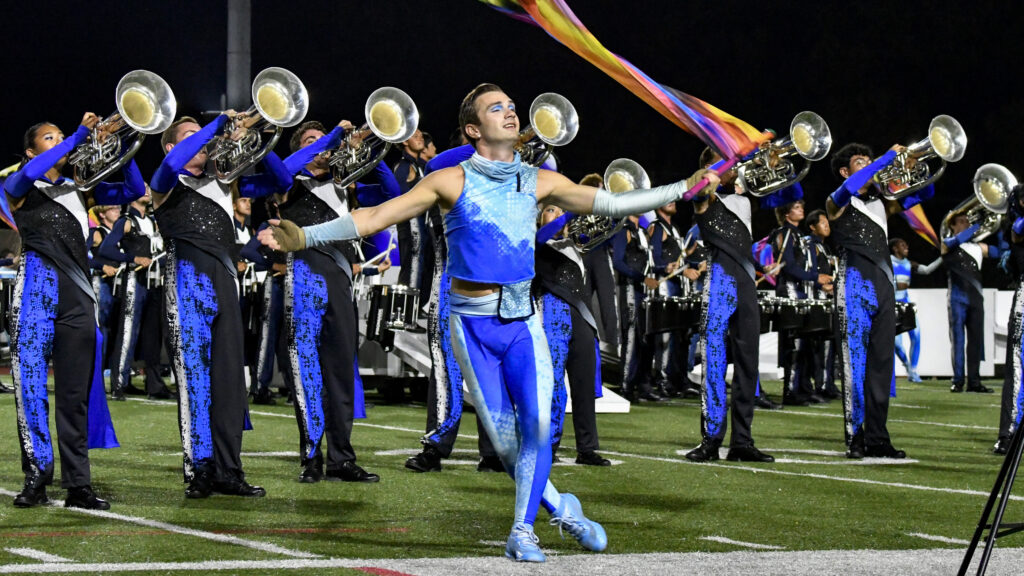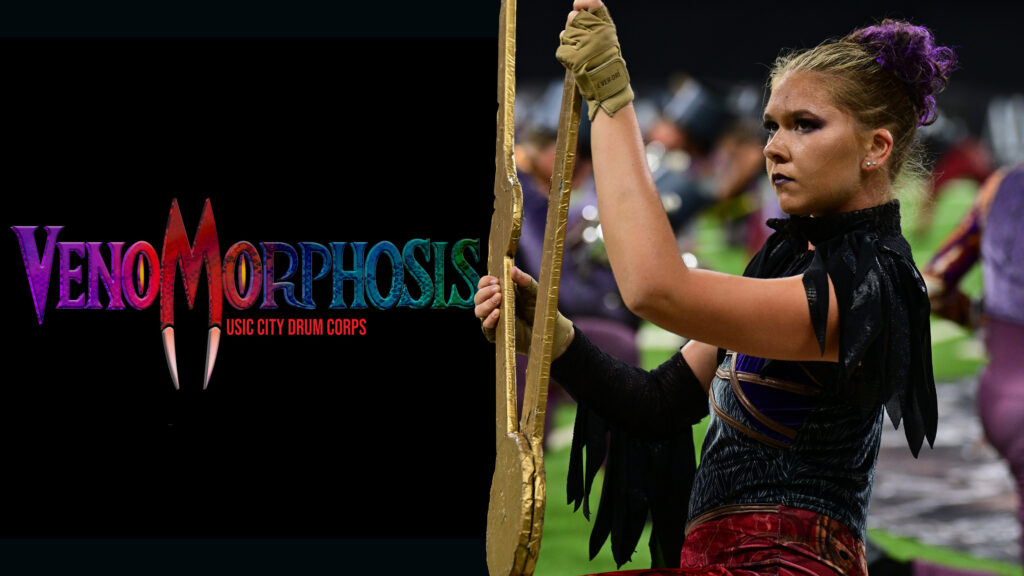The 2000 Drum Corps International Tour at the University of Maryland’s Byrd Stadium ended with a tie for the DCI World Championship between The Cadets and The Cavaliers, the third tie for the title since 1996 and the second in a row.
The year 2000 was marked by a number of notable firsts. The Cadets were one of only two corps including the Blue Devils that switched from G-keyed bugles to any-key brass instruments by a newly-passed rule. 2000 was also the first season that color guard scores were added to the scoring recaps as a separate caption. Up through 1999, the contribution of each corps’ guard was figured into the visual caption scores. The season was also the first that corps performances were made available on DVDs after the season.
Besides the tie, there were eight finalist placements decided by four tenths of a point or less. In the Semifinals, Bluecoats were able to advance to the Finals by just two tenths of a point over 13th place Southwind. Boston Crusaders placed fifth during the corps’ 60th anniversary, just one year after earning a spot among the top 12 finalists for the first time.

With its 2000 production, “The Mask of Zorro,” Carolina Crown placed 11th for the third year in a row. The show was based on music composed by James Horner for the 1998 swashbuckling film drama of the same name.
The Zorro character, named after the Spanish term for “fox,” was the alter ego of Don Diego de la Vega, a masked outlaw character created by Johnston McCulley for a 1919 pulp magazine. A 1920 silent film of the same name starred Douglas Fairbanks, who went on to co-found United Artists film studio and was also a founding member of the Motion Picture Academy, which presents the annual Academy Awards.
The 1998 film that Crown’s show was based upon starred Antonio Bandaras in the title role, along with Anthony Hopkins and Catherine-Zeta Jones. Hopkins was cast as the original Zorro, escaping from prison to retaliate against those who killed his wife. He was joined by Bandaras, the new Zorro whom he personally mentored out of a drunken stupor and who was destined to fall in love with the daughter of Hopkins’ character.
Crown’s show opened with the main title from the film’s soundtrack. The front ensemble percussionists were set up in front of four black angled backdrops that formed a 14-yard wide curtain under which the color guard members would conduct many of their various equipment changes.

Costumed entirely in black, those color guard members started with sabers, a nod to Zorro’s famous sword with which he would carve the letter “Z” into the clothing of his adversaries. Soon, a mysterious crescendo by the brass section reached a climax and the guard members to the right side of the field picked up bright red, orange and purple flags in time for the first big fanfare statement of the show.
The next selection, “The Ride,” evolved out of the main theme and was written in a bombastic triple-meter Latin-style, climaxing visually with the brass players forming a company front that evolved into the letter “Z.”
“Diego’s Goodbye,” which served as the finale in the film, was utilized by Carolina Crown as the ballad in the middle of the show. In the movie, the Hopkins character was mortally wounded in a final act of retribution, and in his last moments before dying, gave his blessing to his daughter and the Banderas character. He appointed Banderas’ character as the new Zorro who should continue his crusade to lift the people out of bondage to their evil overlords.
Color guard members were paired up male-female for a tender dance, with one of the males wearing the Zorro mask. The horns poured to the front of the field as the backfield drums faced away in silence, providing a stage for a massive spinning flag elegy of large peach, orange, and yellow pastel silks.

The selection, “Stealing the Map,” captured the thrilling danger of the Banderas character as he attempted to make off with a map that would lead him to a gold mine where peasants and prisoners were enslaved as miners. This piece of music took up almost half of Crown’s production, but was spread across several moods and melodic themes, mostly of a bravado nature that challenged the corps members to maintain the intensity of the piece.
Modest red flags with a white stripe represented the essence of the common people whom Zorro was dedicated to serving. Music became quite battle-like at this point, with the horns and drums beating out a threatening pulse, followed by a victorious theme of gallant intrepidness.
Blue and green flags added additional spice to the formerly staid look, with the colors also generating a sense of optimism. But there was still a sense of trepidation in the music, and the brass players once again formed the letter “Z,” which quickly dissolved amidst a sea of bright orange flags.
With the mission accomplished, corps members pushed to the front of the field as the lone masked male color guard member and the rest of the section spun their equipment triumphantly, released from the perils and sense of danger that earlier overshadowed so much of the show.
2000 DCI World Championship Finals Awards Ceremony

Michael Boo was a member of the Cavaliers from 1975-1977. He wrote about the drum corps activity for more than 35 years while serving as a staff writer for various Drum Corps International projects. During his lifetime Boo wrote for numerous other publications including an honors-winning book on the history of figure skating. He also was an accomplished composer. Boo passed away in 2020 and was inducted into the DCI Hall of Fame posthumously in 2021.





